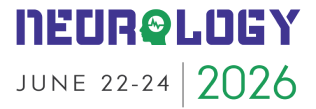Title : 2-Aminoethoxydiphenyl Borate Neuroprotects the Stroke Brain through Shortening of Peri-infarct Depolarizations and Enhanced Perfusion in the Ischemic Penumbra
Abstract:
Ischemic stroke is the cause of high number of deaths and disability-adjusted life years among older adults, with an increasing prevalence due to demographic changes. Secondary mechanisms of injury associated to stroke contribute to exacerbate the damage, thus enhancing the neurological deficits. The lack of clinical translatability of many neuroprotective strategies against secondary damage that were successful during preclinical validation, predisposes to the identification of new molecular targets and molecules. In this study, we examined the neuroprotective properties of 2-aminoethoxydiphenyl borate (2-APB), an antagonizer of several channels and receptors involved in calcium dynamics. This molecule was assessed in non-consanguineous stroke mice that might better model the diversity of human population. After permanent cerebral ischemia induced by irreversible ligation of the middle cerebral artery, 2-APB reduced the size of the damage and preserved the functionality of the somatosensory cortex evaluated by somatosensory evoked potentials, which translated in better behavioral performance. While in this permanent ischemia model the neuroprotective effect exerted by the antioxidant scavenger cholesteronitrone F2 was associated with a reduction of reactive oxygen species (ROS) and better neuronal survival in the penumbra, 2-APB did not modify the inflammatory response or decrease the content of ROS, and its neuroprotective effect was mostly related with a shortening of peri-infarct depolarizations and higher residual cerebral blood flow in the penumbra. Our study points out the potential of 2-APB to target spreading depolarization events and the associated inverse hemodynamic response and contributes for the searching of alternative directions to drive neuroprotection after stroke.
What will audience learn from your presentation?
Explain how the audience will be able to use what they learn?
- The relevance of the election of the mouse strain used for research on stroke. Non-consanguineous specimens develop further variability compared to inbred animals, but might mimic better the diversity of human population.
- The importance of the selection of the appropriate behavioral tests to prove the effects of a neuroprotective drug, highlighting the differential time line among the different behavioral tests analyzed.
- The capability of 2-APB to modulate the duration of cortical spreading depolarizations despite the variability observed in the results as a consequence of the use of a non-consanguineous mouse strain.
- The importance of how the modulation of peri-infarct depolarization translates into specific hemodynamic changes in the penumbra. 2-APB-treated mice showed higher residual cerebral blood flow after permanent ischemia.
- The efficacy of the antioxidant scavenger cholesteronitrone F2 in reducing reactive oxygen species content in a model of permanent ischemia; until now this molecule has only been tested in ischemia-reperfusion models.
How will this help the audience in their job? Is this research that other faculty could use to expand their research or teaching? Does this provide a practical solution to a problem that could simplify or make a designer’s job more efficient? Will it improve the accuracy of a design, or provide new information to assist in a design problem? List all other benefits.
- The work is timely and will be of interest to a broad readership of biologists and physicians, essentially scientists who are interested in searching alternative avenues to drive neuroprotection after stroke.
- The introduction of electrophysiological measurements such as somatosensory evoked potentials in the experimental design as a quantitive way to infer post-stroke cortical functionality in response to any potential treatment.
- The detection of reactive oxygen species in vivo, alternatively to ex vivo detection, might display a more accurate perspective of stroke derived oxidative stress that can be transferred to study other neuropathologies linked with oxidative stress.




